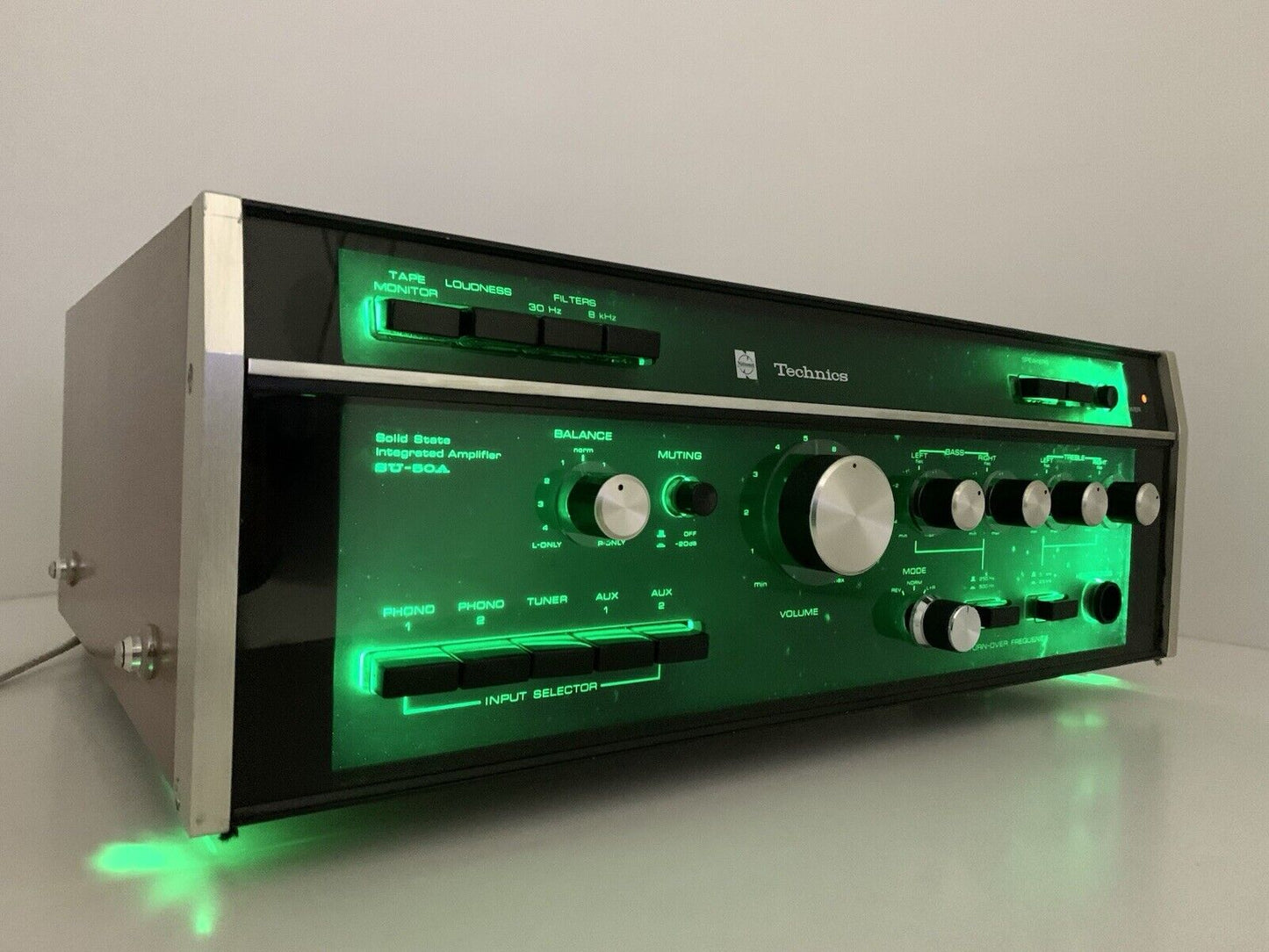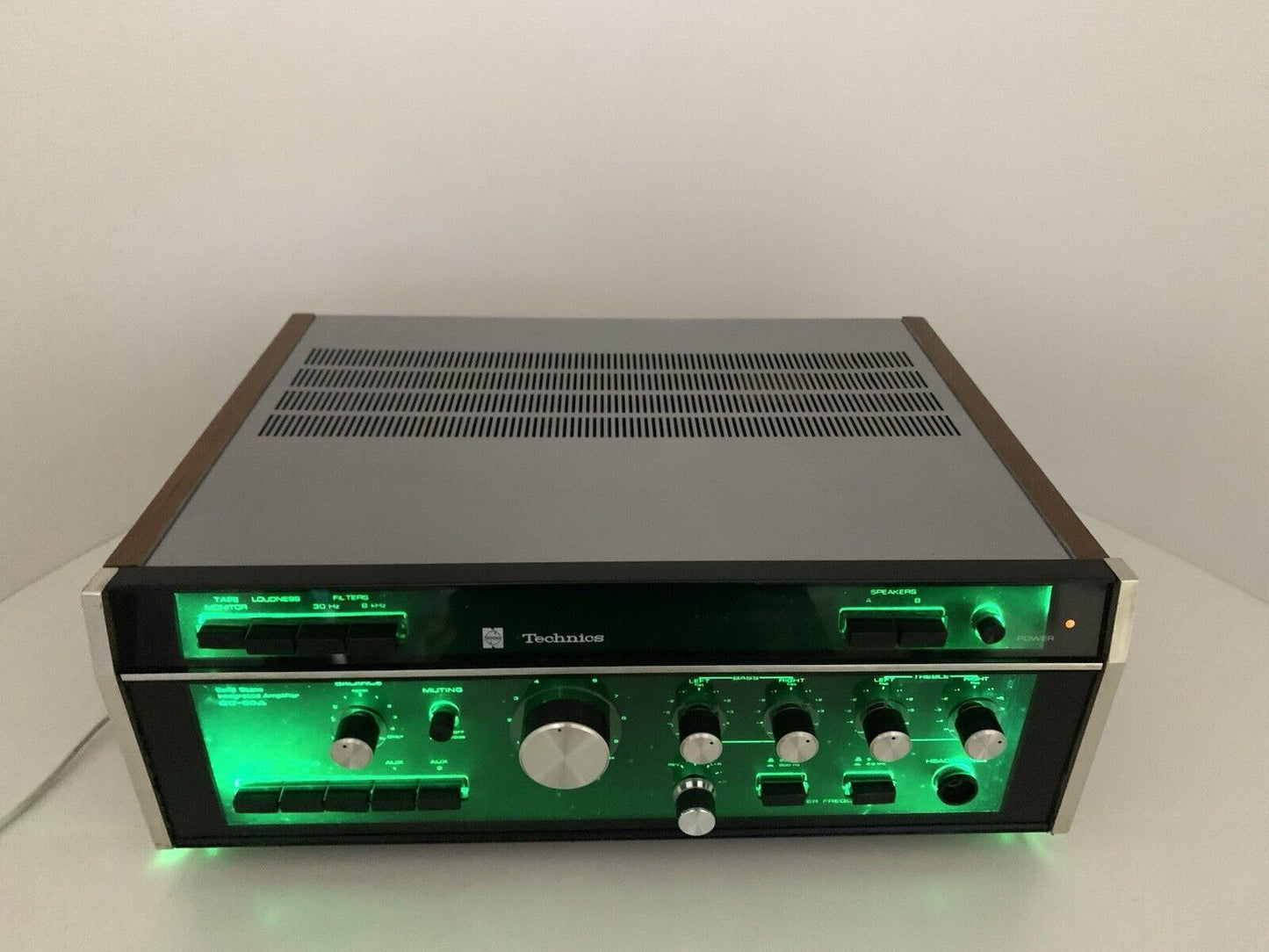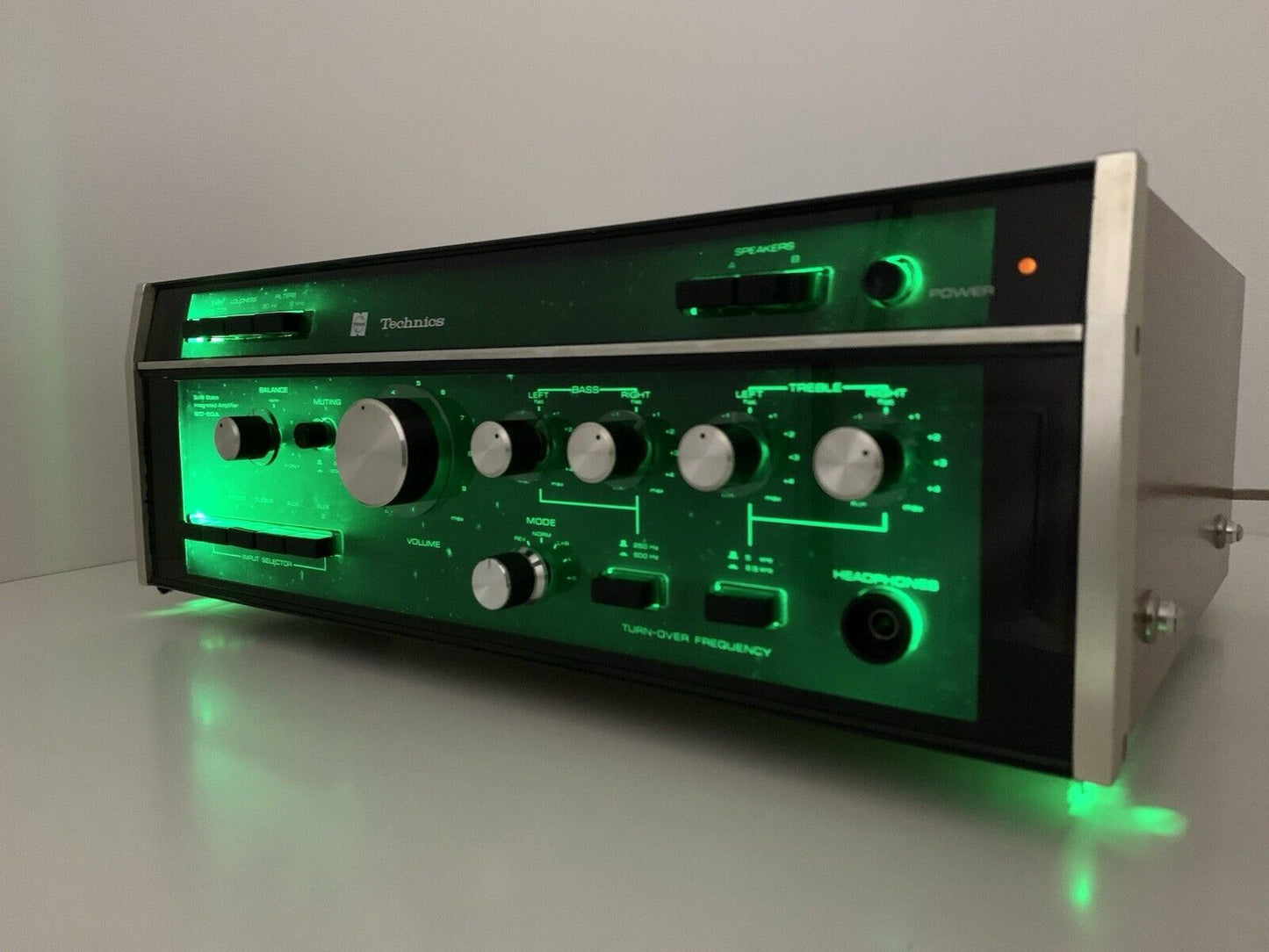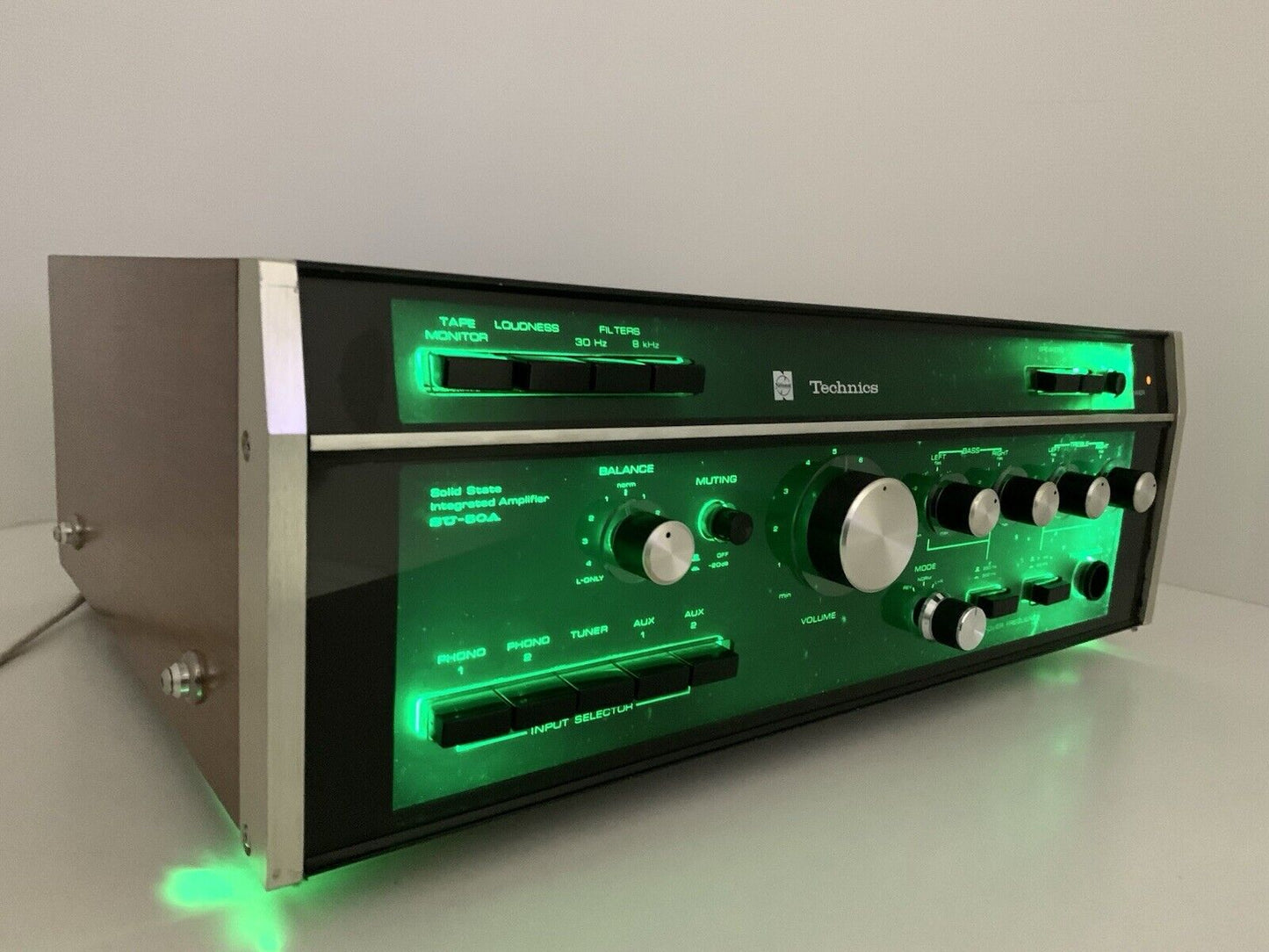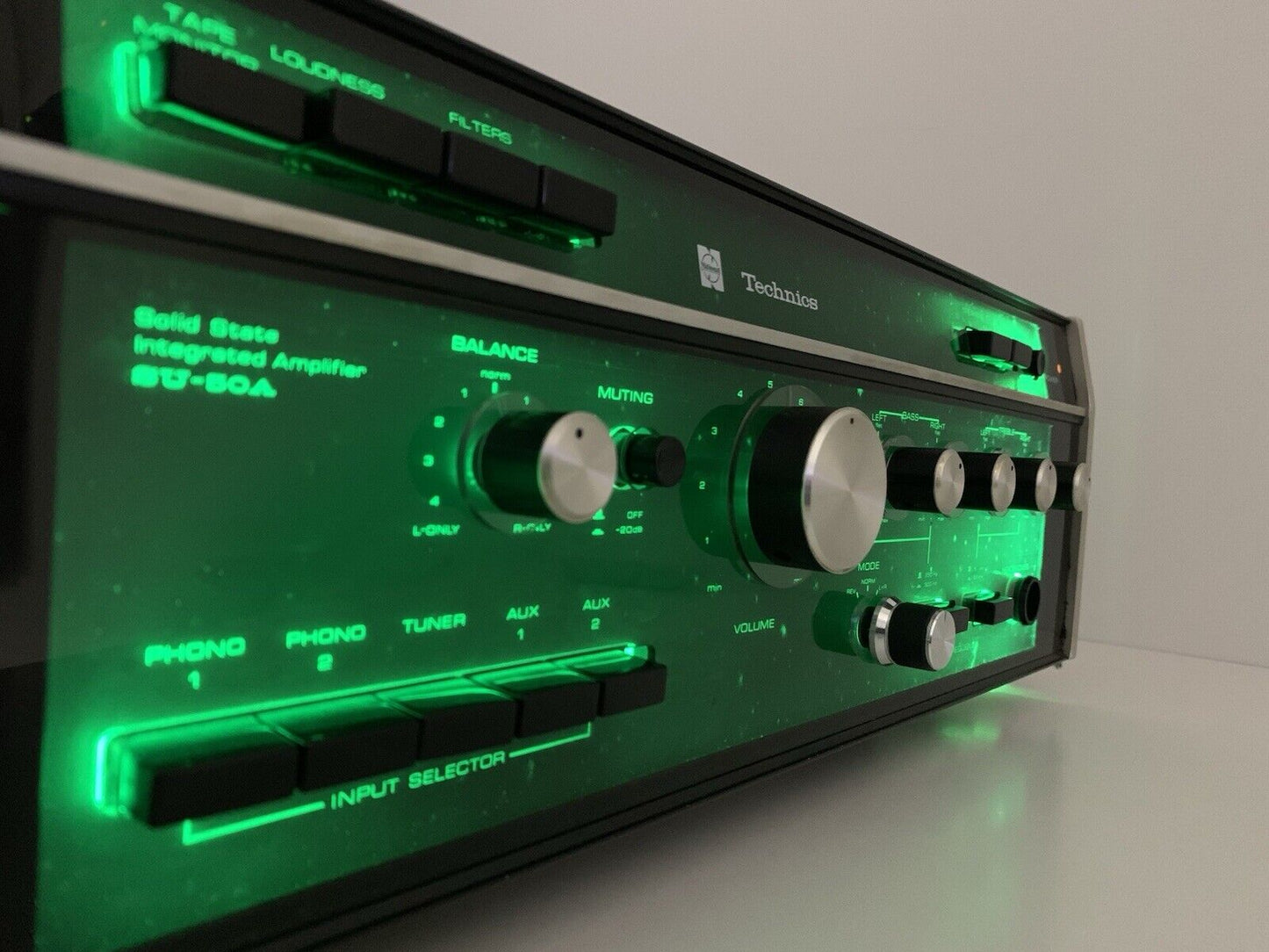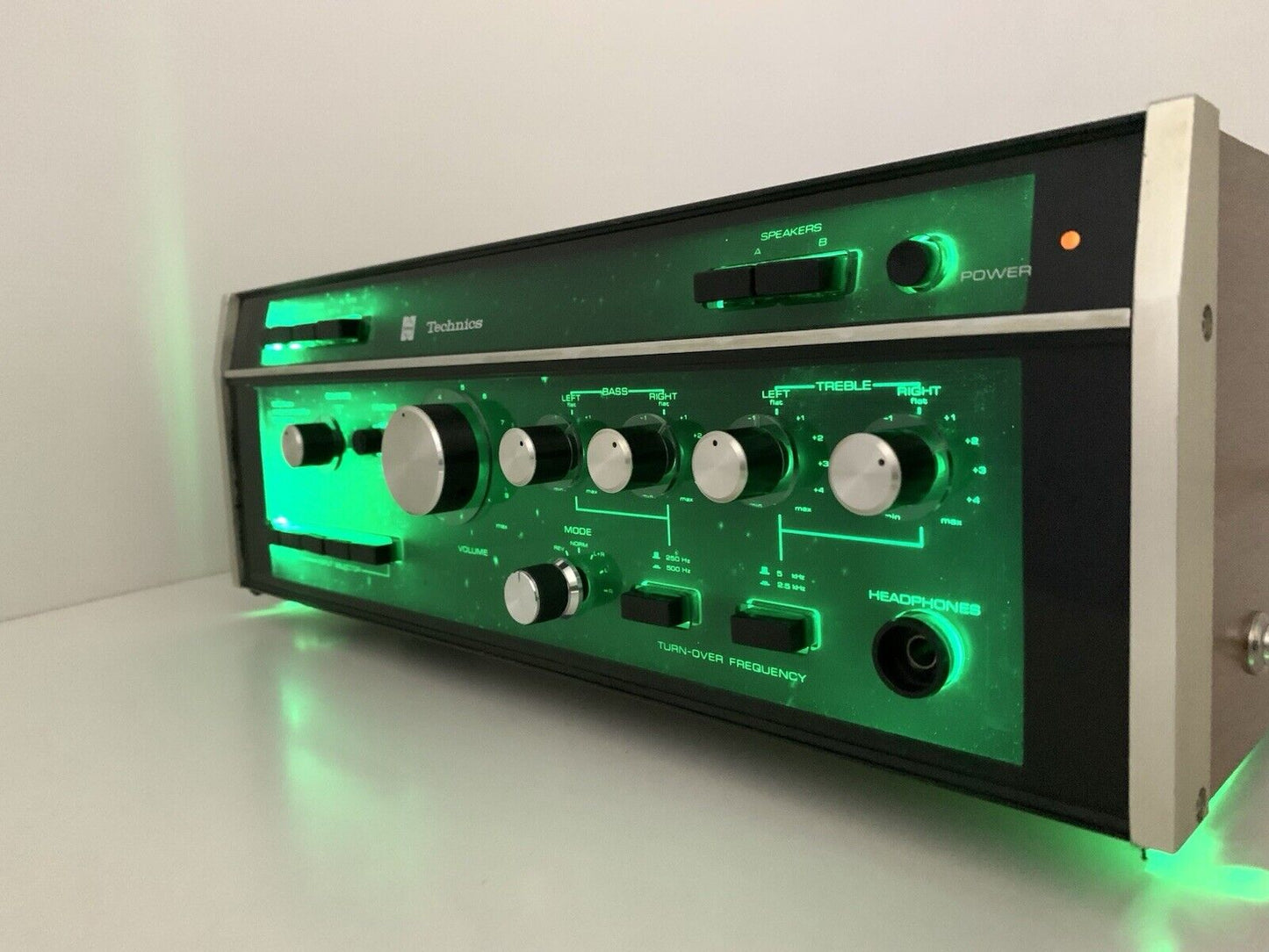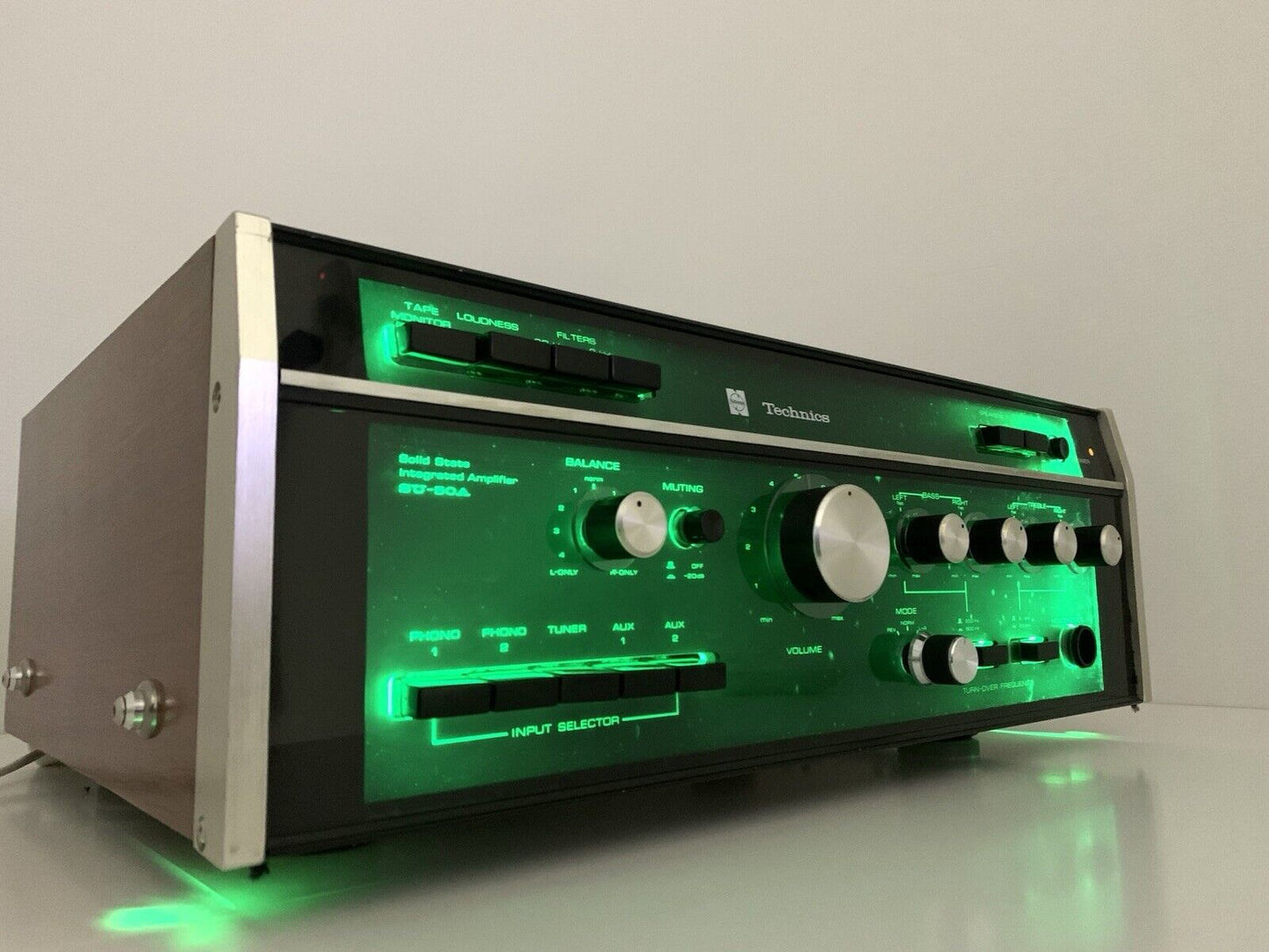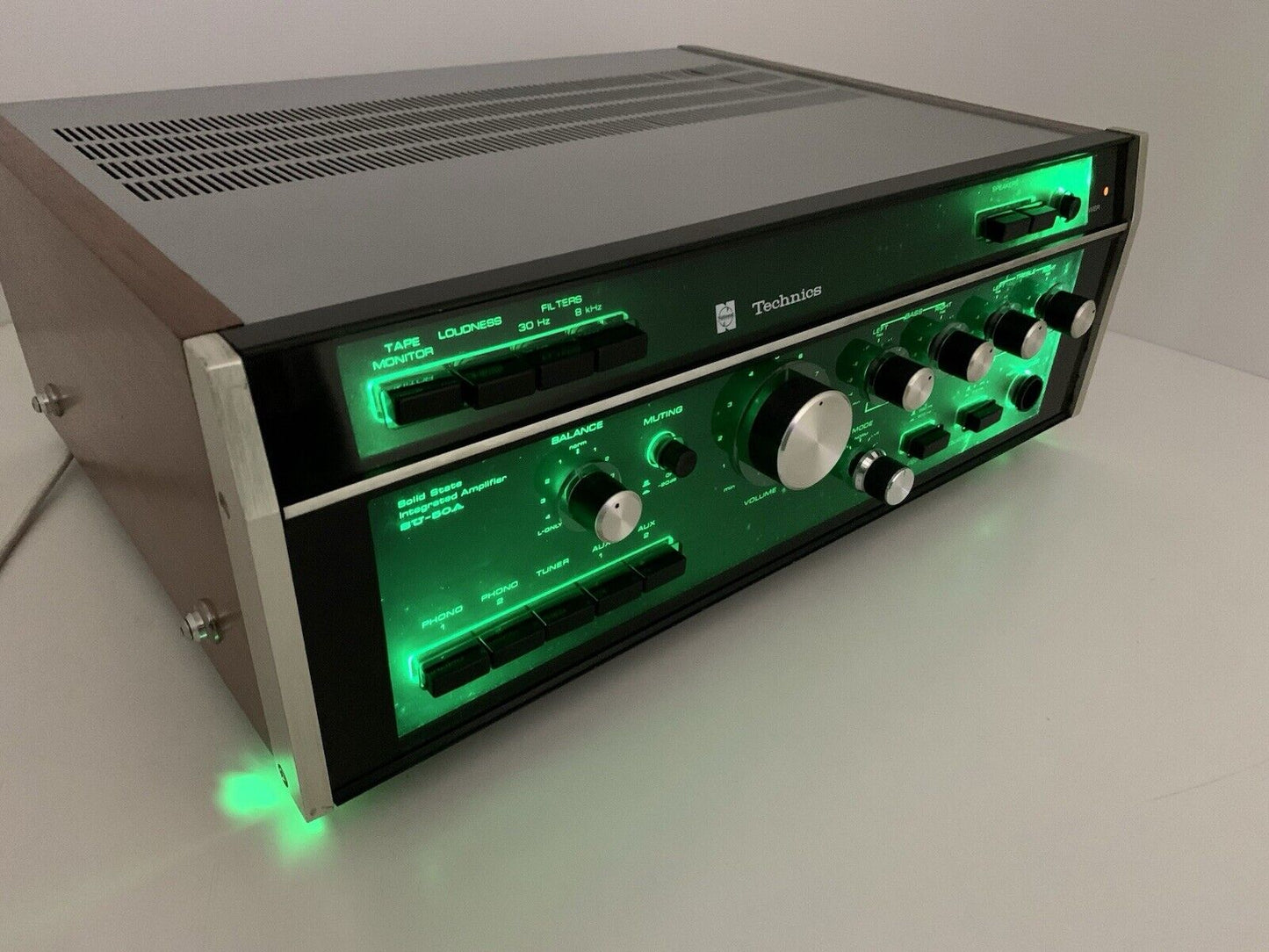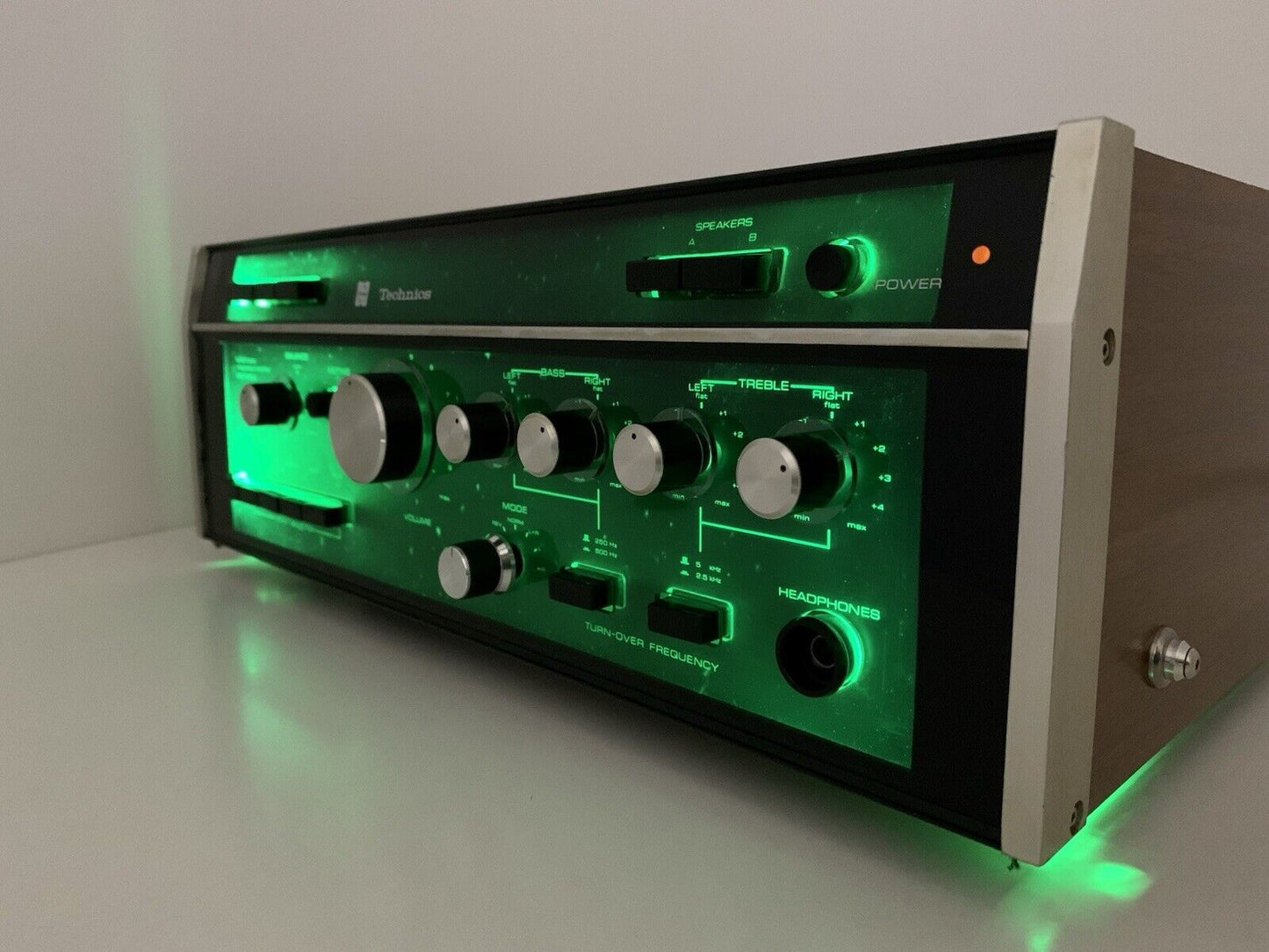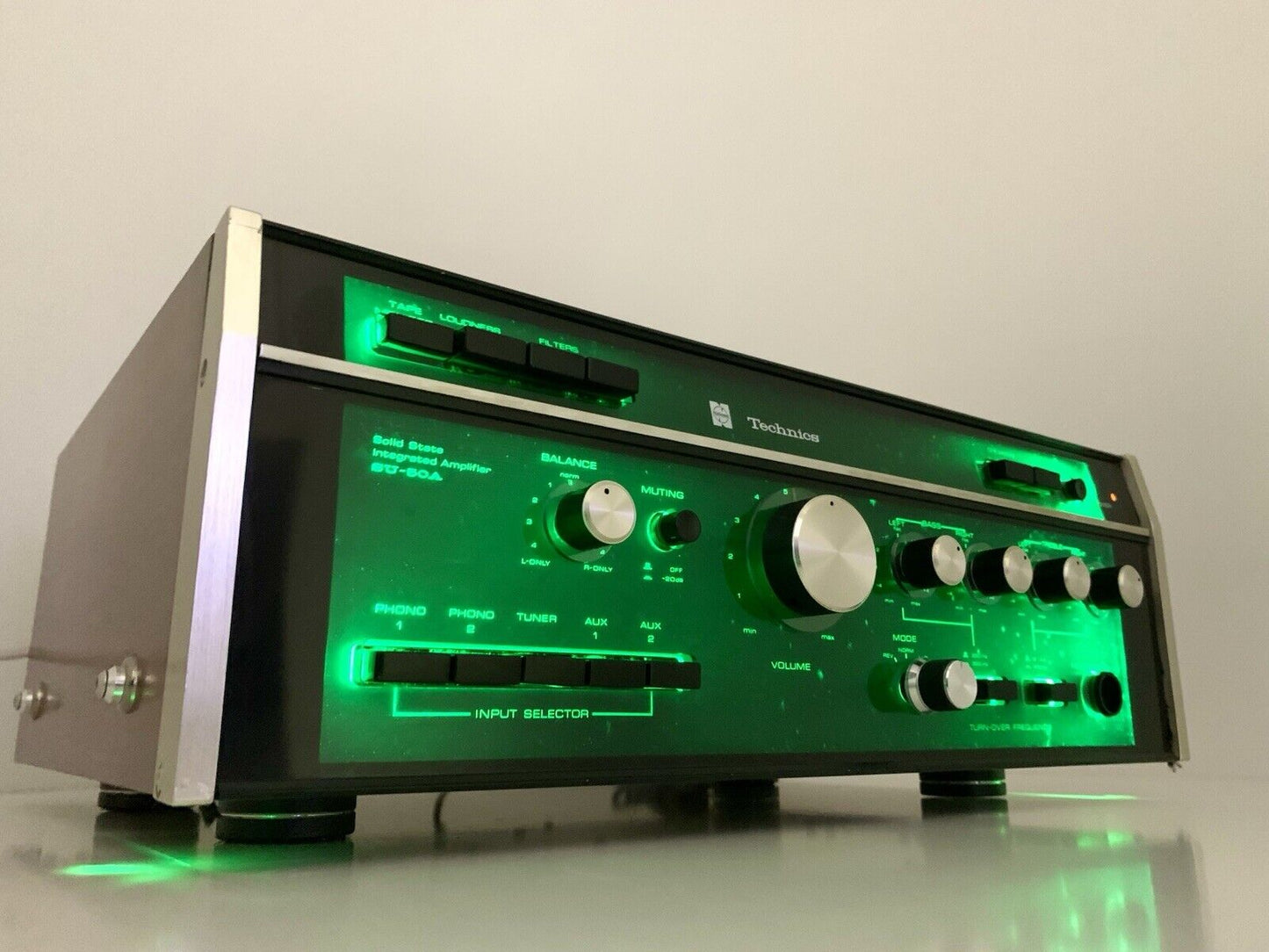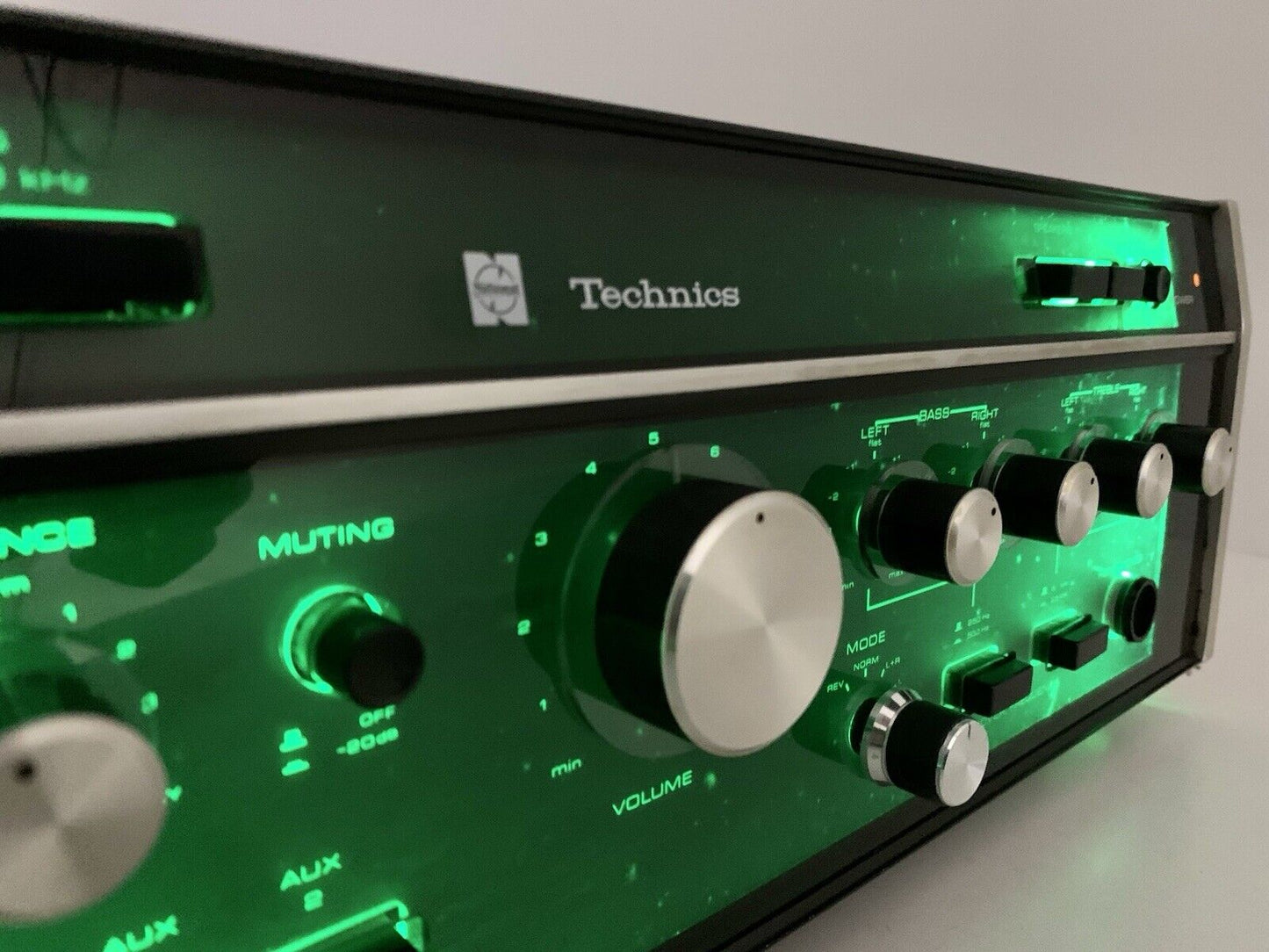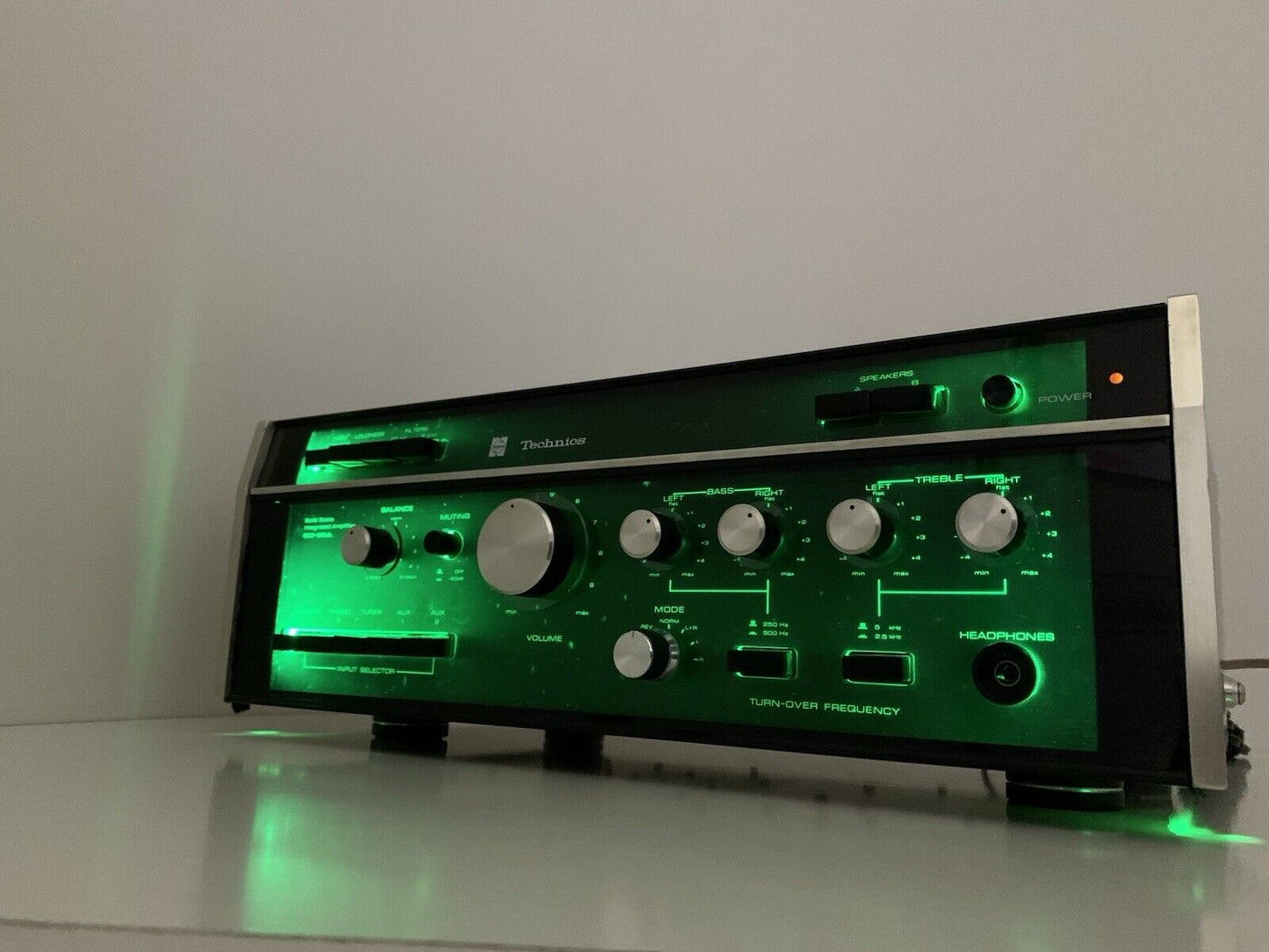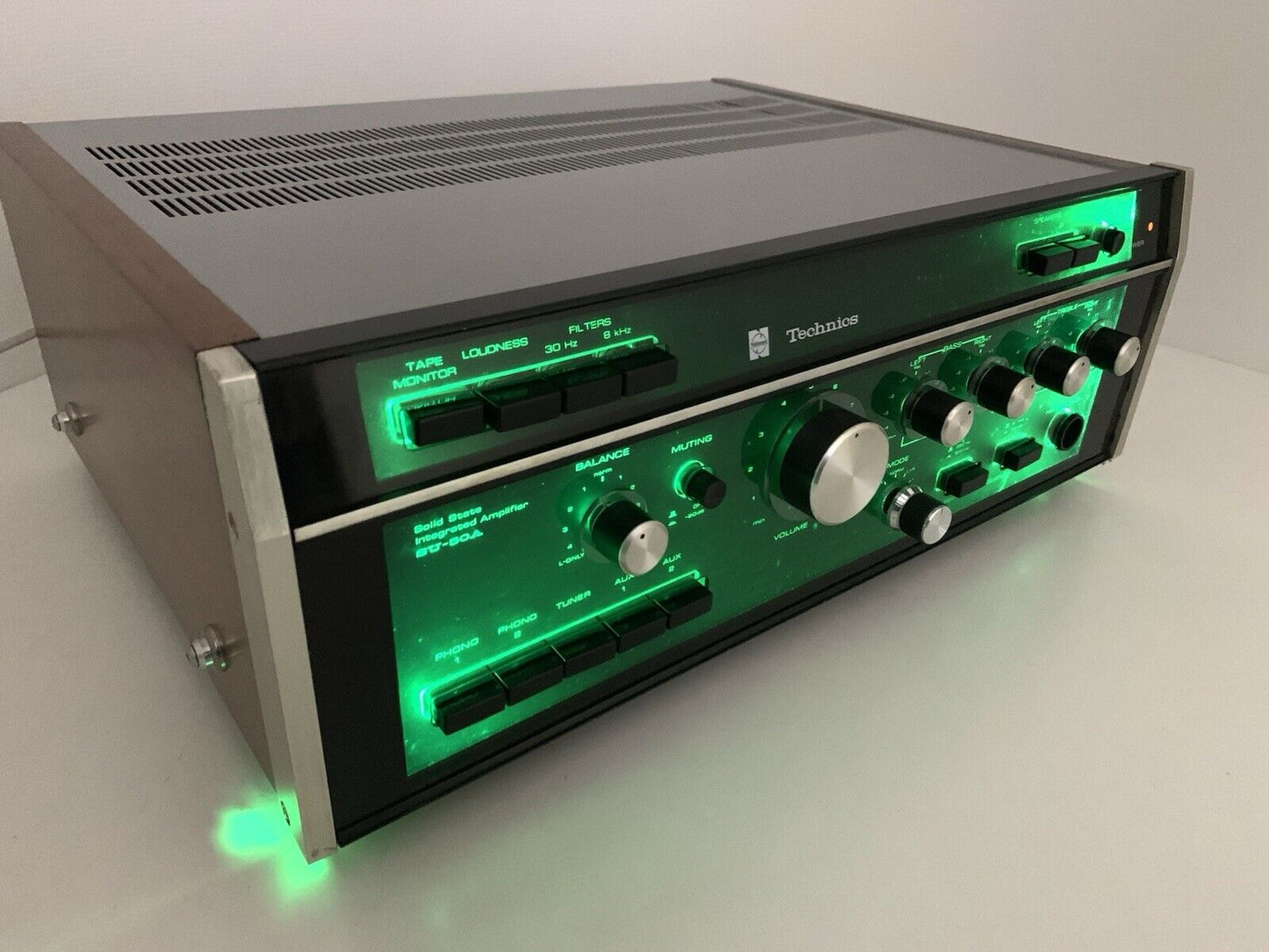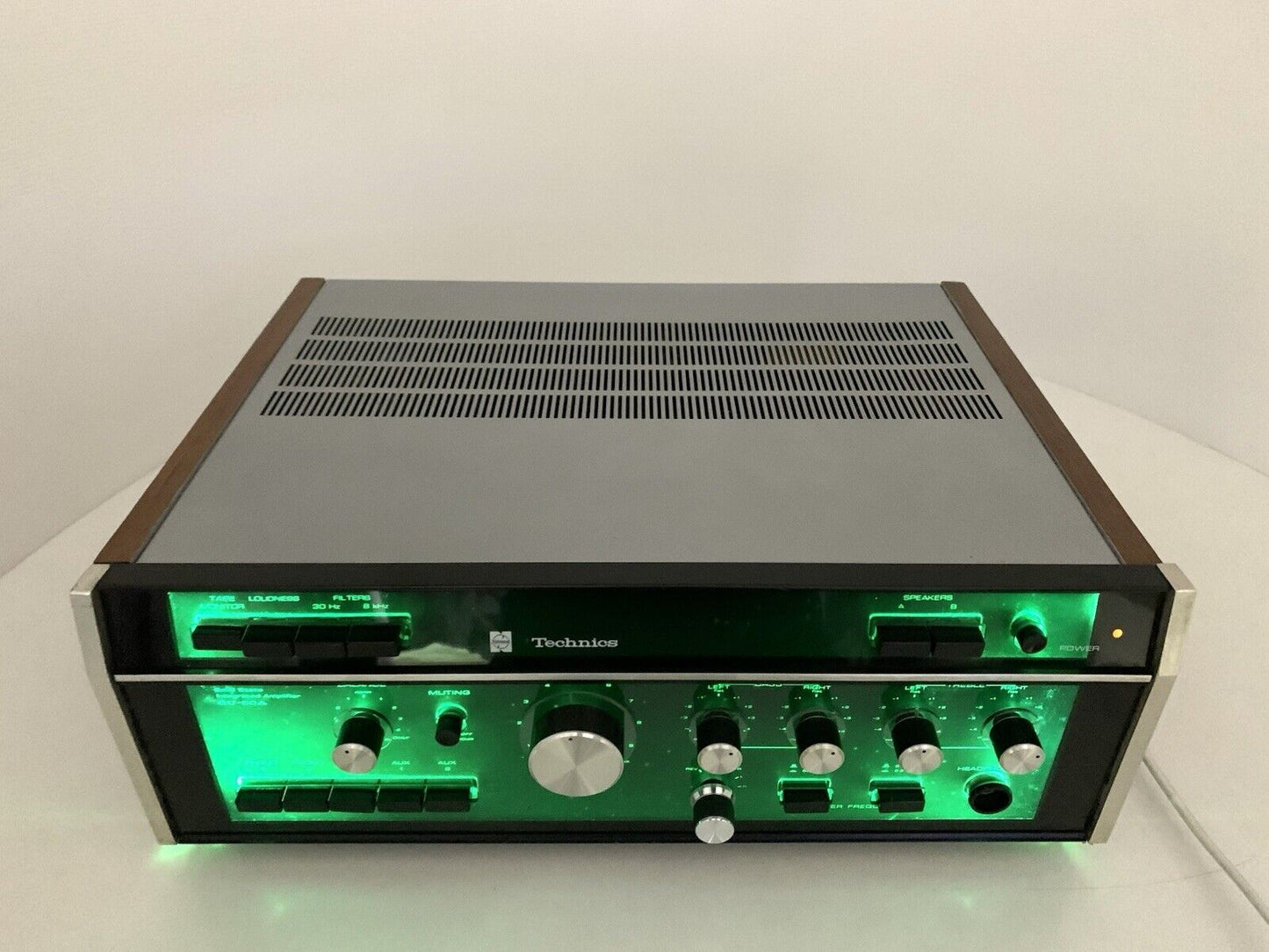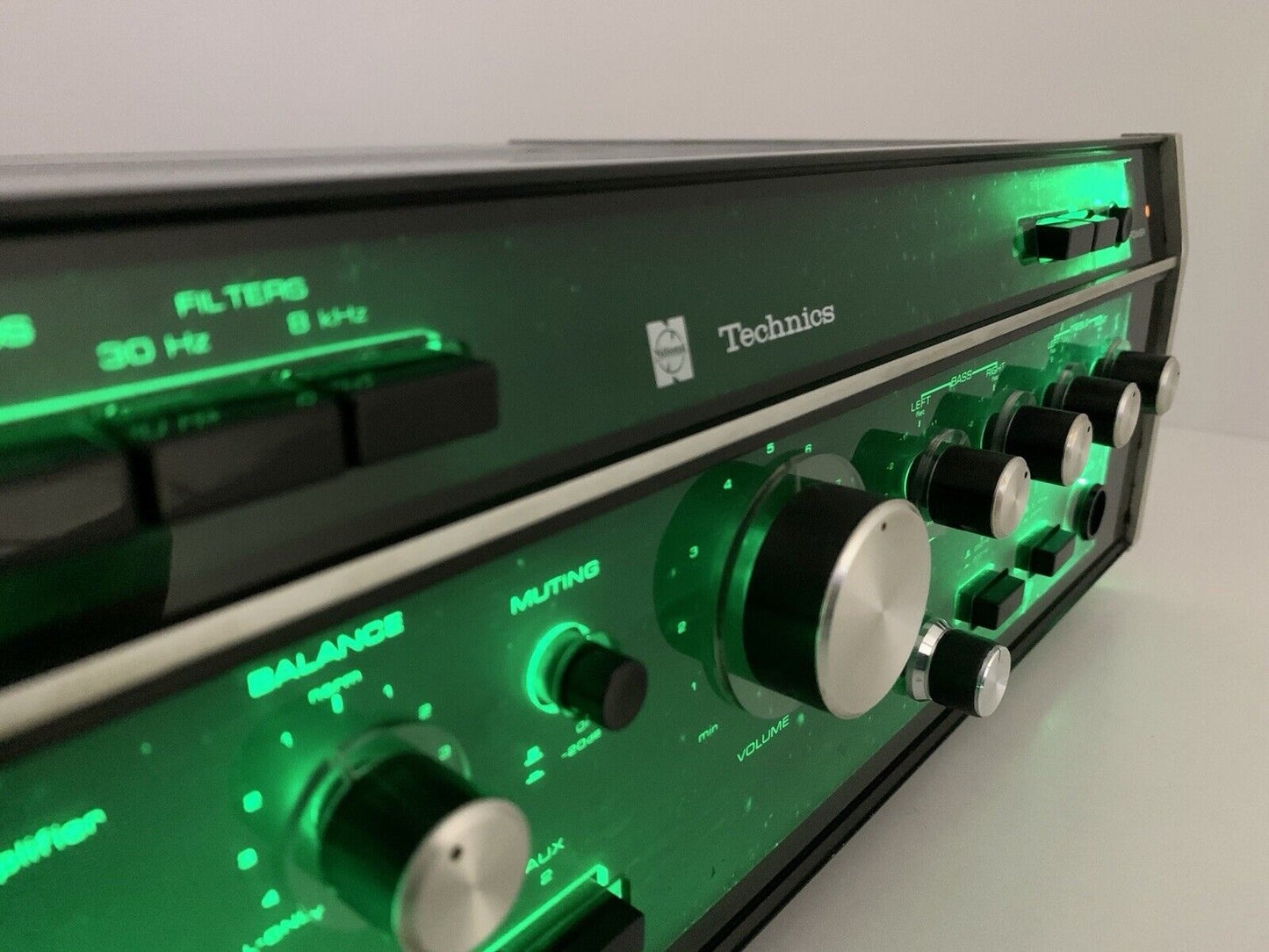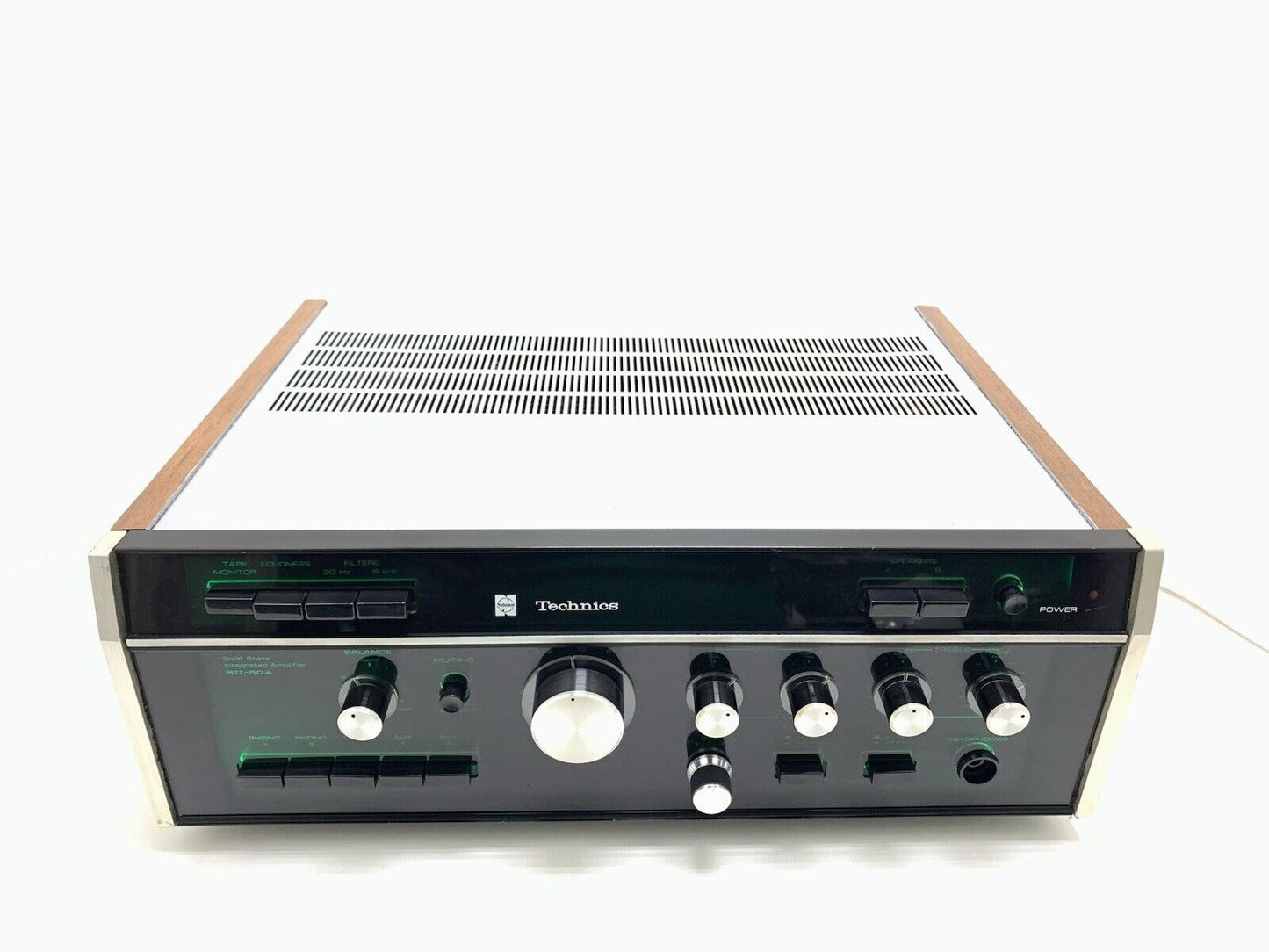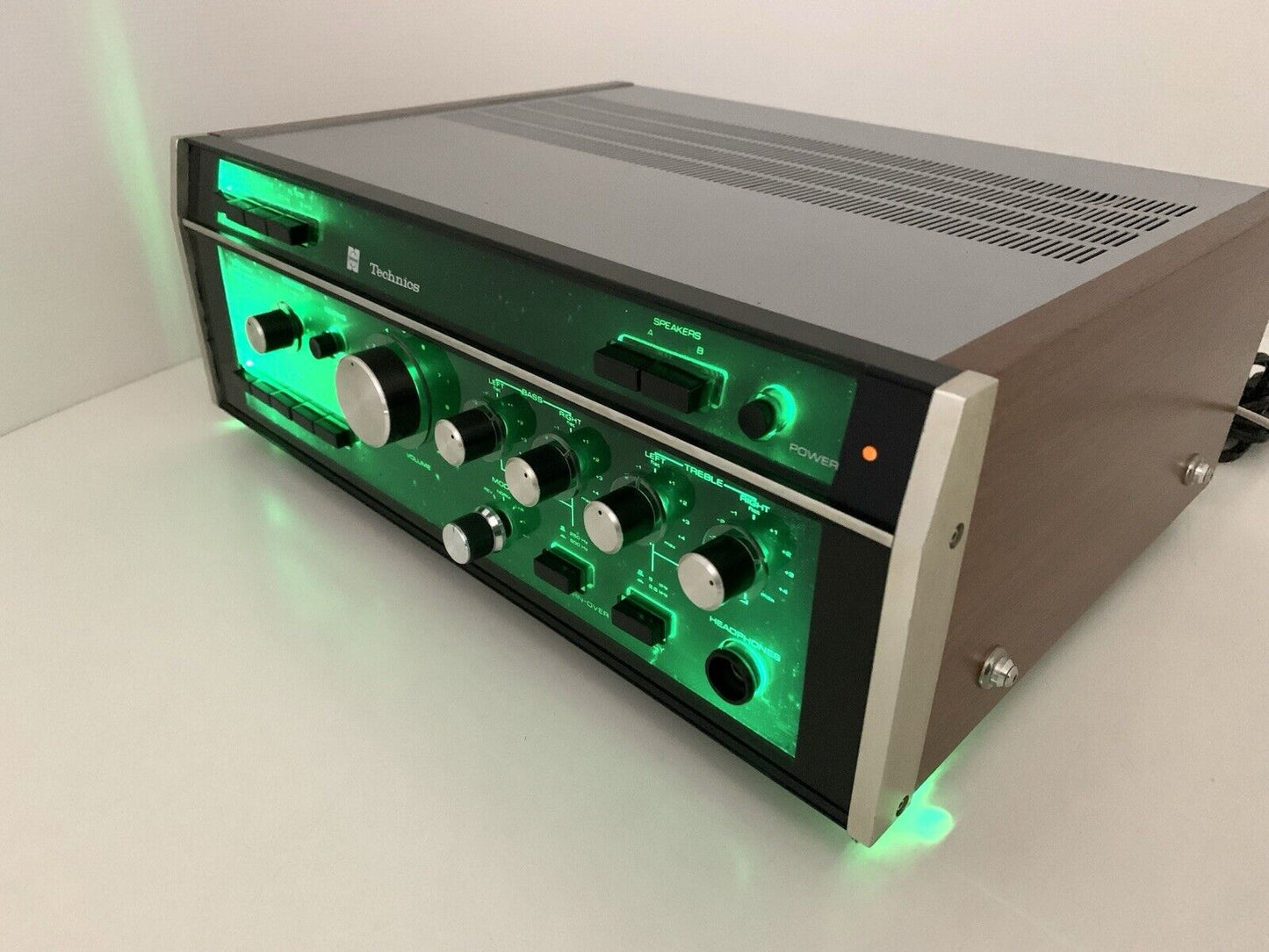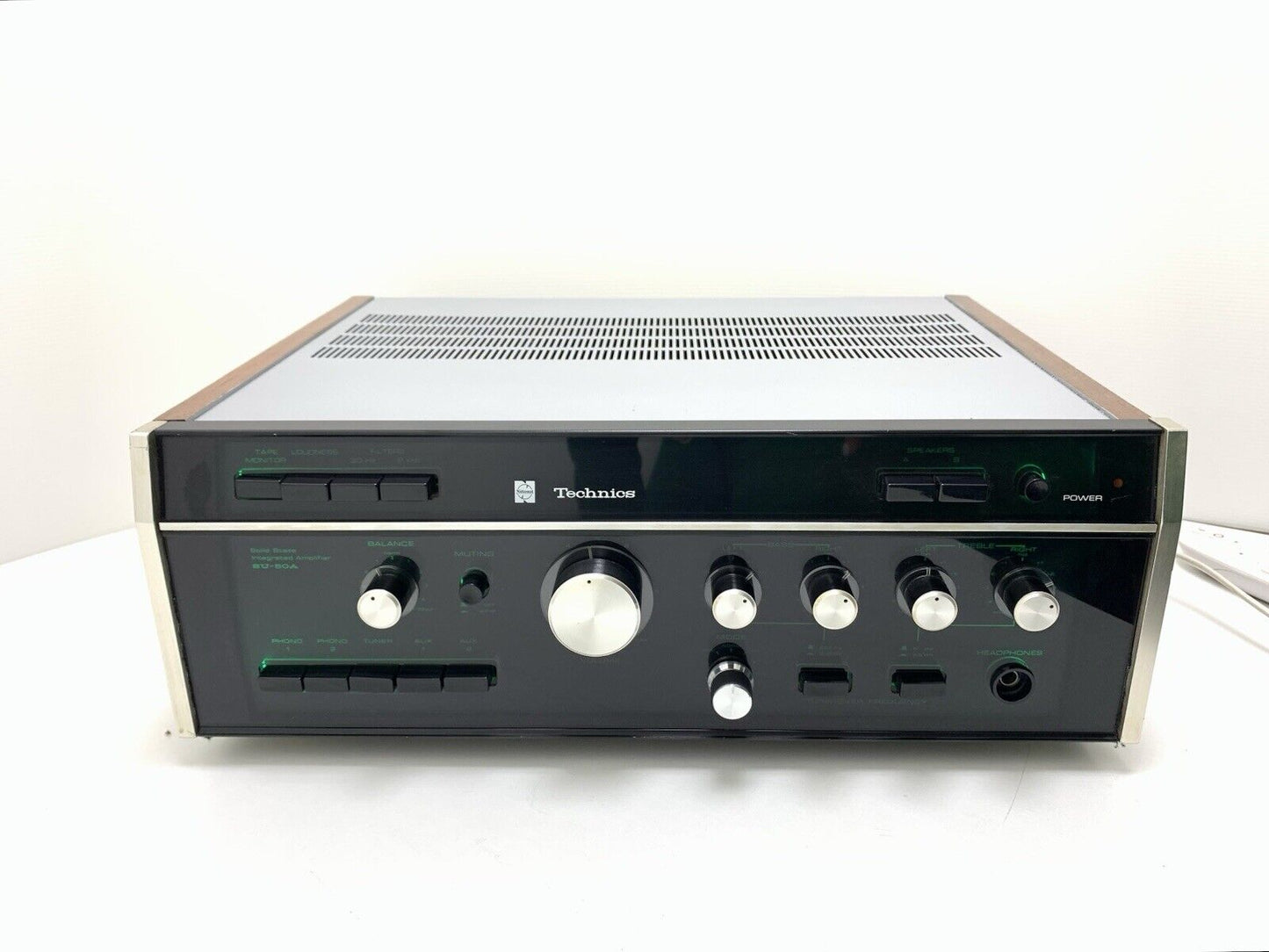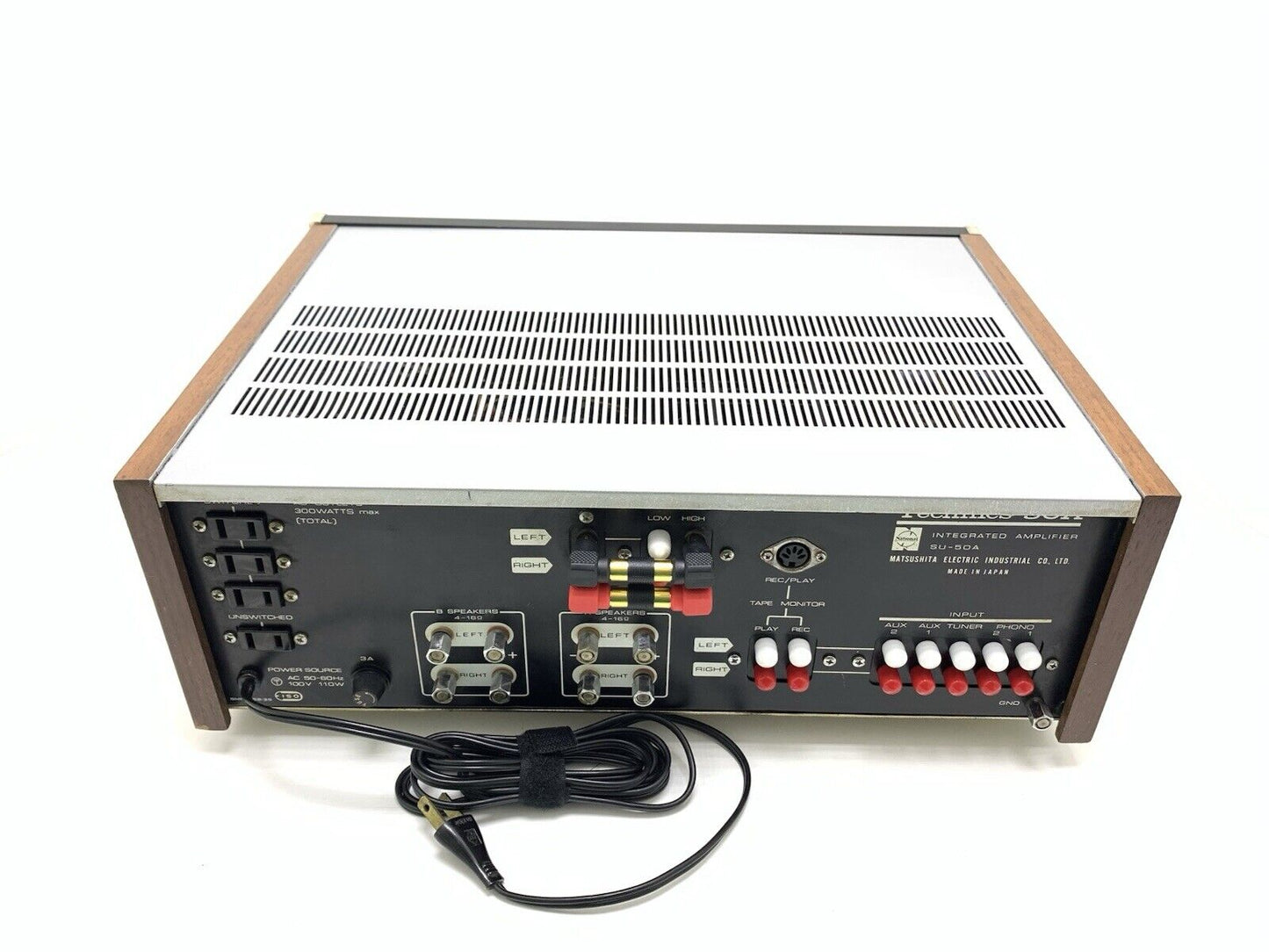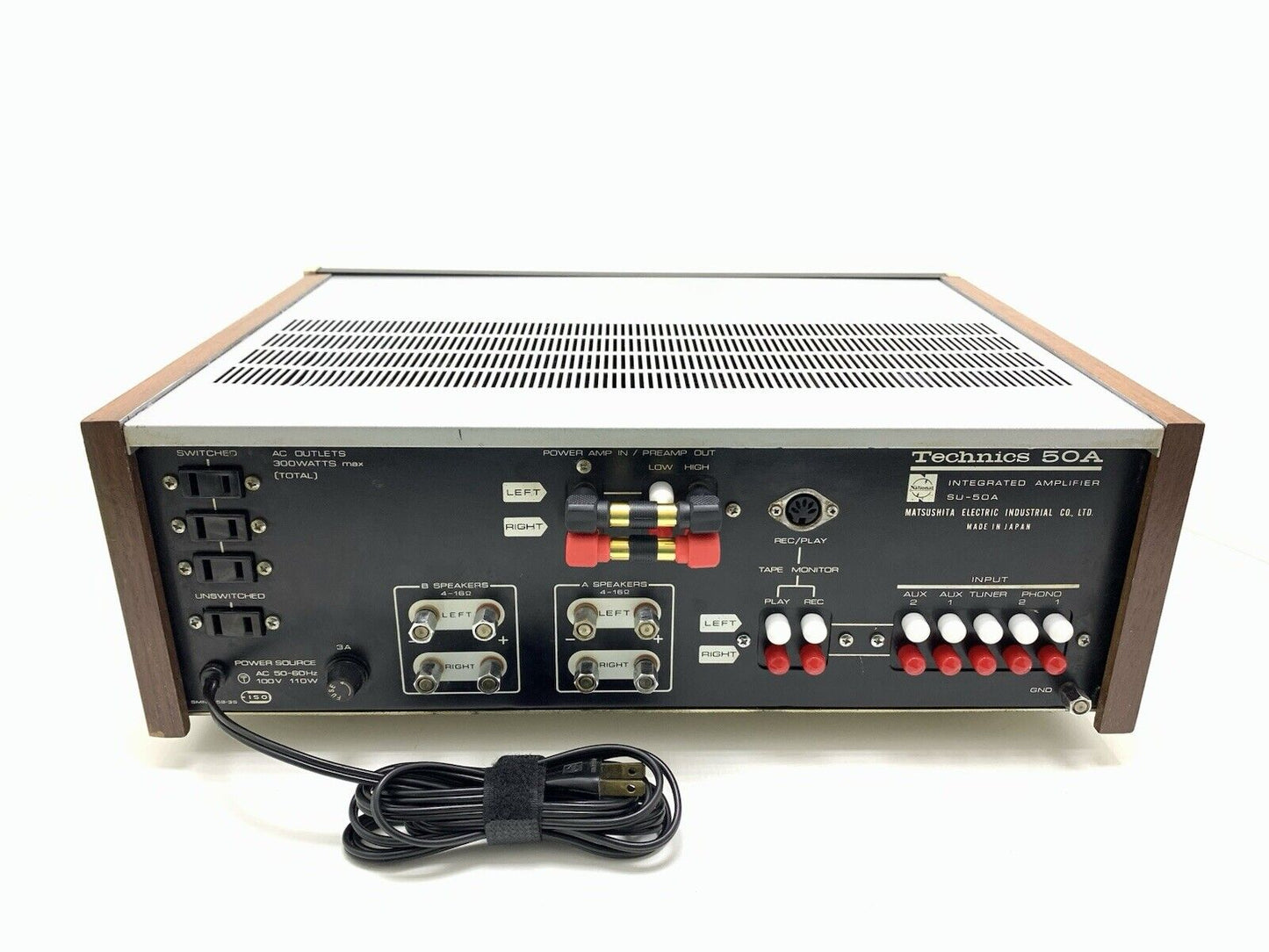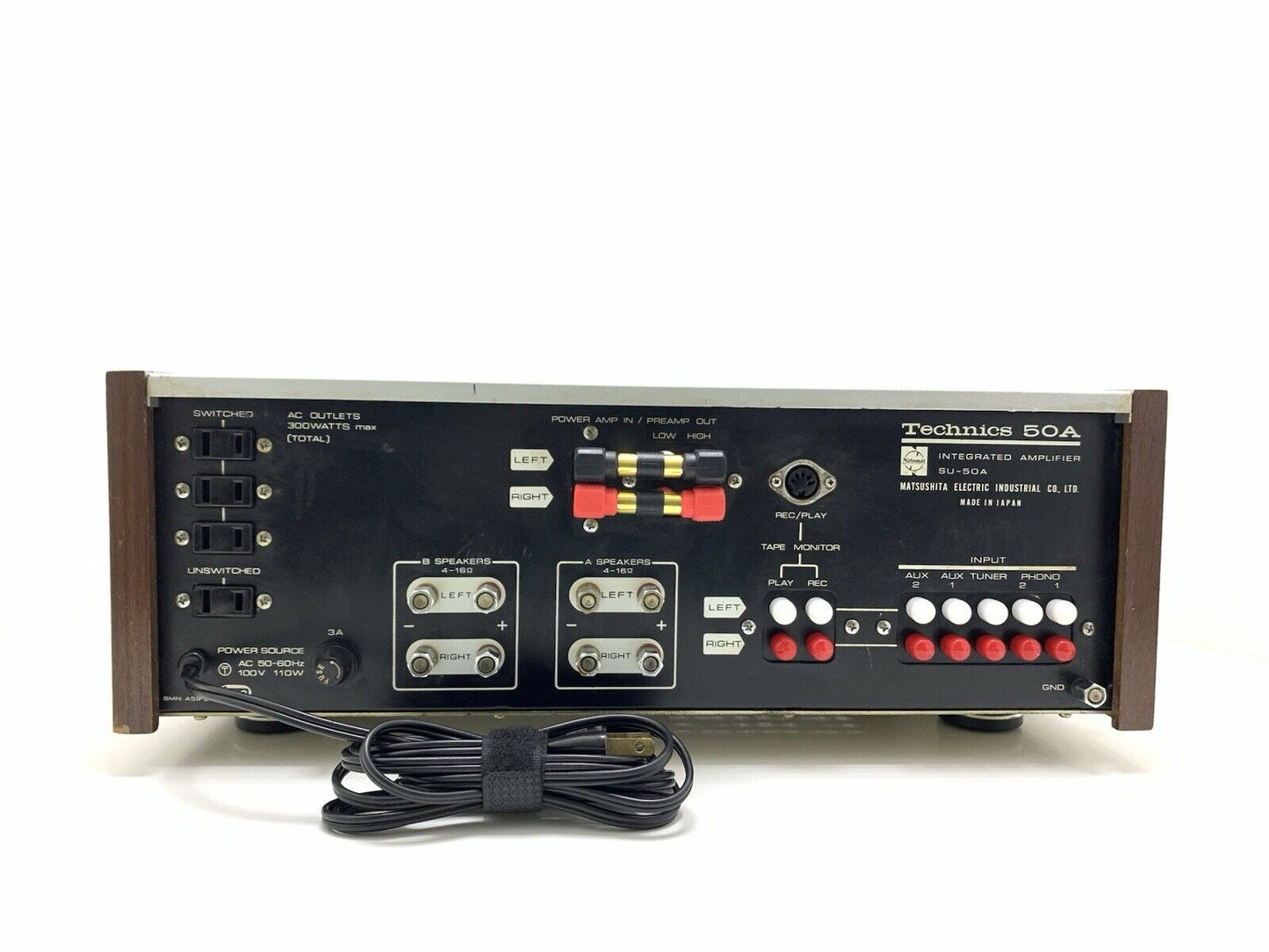Technics
TECHNICS SU 50A Stereo Integrated Solid State Amplifier Vintage 1969 GOOD LOOK
TECHNICS SU 50A Stereo Integrated Solid State Amplifier Vintage 1969 GOOD LOOK
Impossible de charger la disponibilité du service de retrait
TECHNICS SU 50A Stereo Integrated Solid State Amplifier Vintage 1969 GOOD LOOK
The Technics SU-50A amplifier is a vintage item manufactured in the late 1960s. It is one of the first solid-state amplifiers, with a sound quality comparable to a tube amplifier. It is very rare and hard to find in perfect aesthetic and functional condition—a true work of art from Technics’ golden era.
Technics EAA-2010/SU-2010/SU-50A/Technics 50A
¥ 95,000 (released in June 1969)
¥ 95,000 (around 1970)
Working perfect, All Refurbished
Work On 100/120/220/240 volts AC
VERY RARE Vintage Amplifier
with New GREEN LED lights Like MCINTOSH!
This solid state pre-main amplifier was created by integrating the development technologies of the Technics 10A, 20A, 30A, and 40A tube type amplifiers.
The model number has been changed 3 times : EAA-2010, SU-2010 and SU-50A.
The main amplifier section uses a two stage differential amplifier circuit and an OCL circuit with a two power supply system. All stages are directly connected. The circuit configuration without an output capacitor improves low-frequency characteristics and improves stability and linearity.
The equalizer stage of the preamplifier amp section is composed of 3-stage direct connection NF type using low-noise PNP transistor, which solves the shortage of dynamic range and obtains high S/N.
The tone control circuit is based on Technics's original method using special double volume.
This system has a special structure that combines a silver conductor and a resistor. At the midpoint, both brushes touch the silver conductor, so that all capacitors are removed from the circuit to become a resistance-only circuit, resulting in a flat characteristic.
A protection circuit using four transistors and two diodes is mounted.
This circuit is equipped with an automatic control and protection device that detects the operating point of the power transistor to maintain safe operation, an automatic correction circuit for temperature changes, and an instantaneous recovery type so that even if an excessive current flows, the signal only clips and operation is not interrupted.
The front panel features push-button input selection buttons and a large volume knob to improve usability.
In addition, it uses a design in which the letters on the front panel come out when the switch is turned on.
The pre-out terminal is equipped with two systems, a Low terminal with a rated output of 1 v and a High terminal with a rated output of 5 v.
It is equipped with 4 AC outlets.
Equipped with two types of speaker connection terminals.
Model Rating
Type Solid state pre-main amplifier
Circuit system Full-stage direct-coupled differential amplifier
SEPPP OTL-OCL Circuit
Power Amplifier Unit
Music Power (IHF) 120W (4 Ω)
80W (8 Ω)
50W (16 Ω)
Rated Output (IHF) 40W/40W (4 Ω)
30W/30W (8 Ω)
20W/20W (16 Ω)
Frequency response (at rated output) 5 Hz to 150 kHz
Signal-to-noise ratio 95 dB or more (IHF, A-network, input short)
Input Sensitivity / Impedance 1V/50k Ω
Damping factor 150 (8 Ω)
Adaptive load impedance 4 Ω ~ 16 Ω
Transistor protection circuit ASO detection method instantaneous return type
Preamplifier Section
Input Sensitivity / Impedance
(1 kHz, Volume max) Phono1, 2 : 1mV/47k Ω
Tuner : 100mV/70k Ω
Aux1, 2 : 100mV/70k Ω
Maximum allowable input
(1 kHz, 0.1% distortion rate) Phono1, 2 : 140 mV
Tuner:10V
Aux1, 2 : 10 v
Output Voltage / Impedance
Rated output : 1V/3k Ω (Low)
5V/200 Ω (High)
Maximum output (1 kHz, 0.1% distortion rate) : 1.8V(Low)
9V(High)
Tape monitor Rec out : 100mV/200 Ω
Playback : 100mV/70k Ω
Rec/Play(DIN): 30mV/60k Ω (IN)
100mV/70k Ω (OUT)
Signal-to-noise ratio (IHF, A-network
Input short) Phono1, 2 : 70 dB or more
Tuner : 90 dB or higher
Aux1, 2 : 90 dB or more
Total harmonic distortion factor Not more than 0.1%
Frequency characteristic
High, VRmax, TCflat : Phono1 and 2 : within ± 0.5 dB deviation from RIAA standard curve
Tuner : 5 hz to 200 khz, + 0 to 3 db
Aux1, 2 : 5 Hz to 200 kHz, + 0 -3dB
Low, VRmax, TCflat : Phono1 and 2 : within ± 0.5 dB deviation from RIAA standard curve
Tuner : 5 hz to 150 khz, + 0 to 3 db
AUX1, 2 : 5 Hz to 150 kHz, + 0 -3dB
Tone control Bass : + 15 dB ~ -15dB
Turnover frequency : 250 Hz, 500 Hz
Treble : + 15 dB to -15dB
Turnover frequency : 2.5 kHz, 5 kHz
Filter Low : 30 Hz, -12dB/oct.
High frequency : 8 kHz, -12dB/oct.
Muting -20dB
<General>
Semiconductor used
Transistors (43 pcs) : 2SA564A : 20
2SA564 : 2
2SC828 : 4
2SB171 : 4
2SC696A : 4
2SA547A : 2
2SC697A : 2
2SD189 : 4
2SB473 : 1
Diodes (17 pcs) : MA242 : 2
MA242R : 2
SD-1Y : 1
SV-02 : 2
SM-150-005 : 8
OA-70 : 2
Pwer 100 VAC / 117 V / 220 V / 240 V, 50/60Hz
AC outlet Switched : Route 3
Unswitched : 1 line
Power consumption Rated output : 175 VA
No signal : 37 VA
External dimensions Width 420x Height 147x Depth 325 mm
Weight 13.5kg
ESPAÑOL:
El amplificador Technics SU-50A, lanzado en la década de 1960, es una pieza histórica en la evolución de los amplificadores de estado sólido. Aunque las especificaciones pueden variar ligeramente dependiendo de la fuente, las características técnicas típicas de este modelo incluyen:
• Tipo: Amplificador integrado de estado sólido
• Potencia de salida: Aproximadamente 25 vatios por canal a 8 ohmios
• Respuesta de frecuencia: 20 Hz a 20 kHz
• Distorsión armónica total (THD): Menos del 0,5% a plena potencia
• Entradas: Varias, incluyendo phono, cinta, y auxiliar, permitiendo conectar diferentes fuentes de audio
• Impedancia de entrada: Ajuste específico para fuentes como tocadiscos y cintas
• Controles de tono: Graves y agudos ajustables
• Diseño de circuito: Diseño de transistores que permite un sonido similar a los amplificadores de válvulas
• Dimensiones y peso: Varía, pero generalmente compacto para su época
Este amplificador es apreciado por su sonido cálido y su estética retro, características que lo hacen un equipo deseado por los coleccionistas de equipos de alta fidelidad vintage.
Partager
